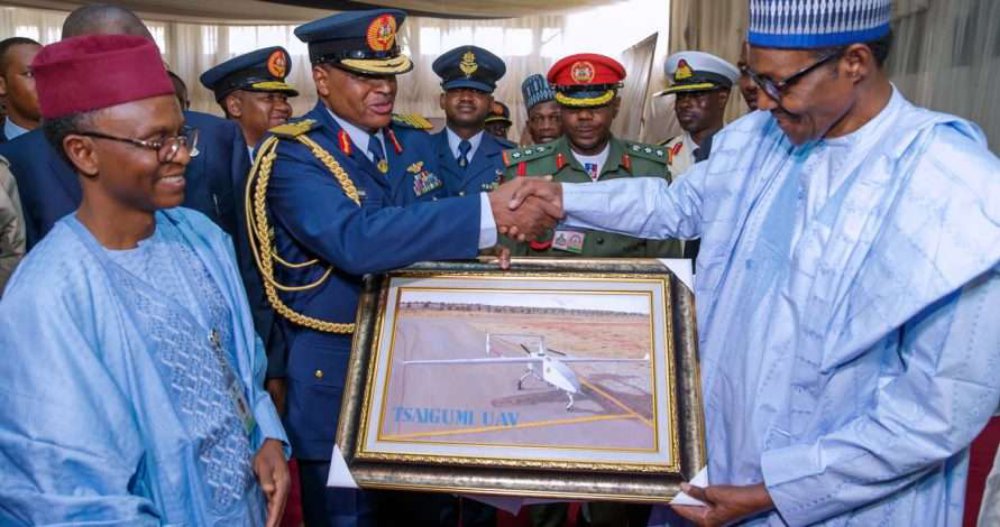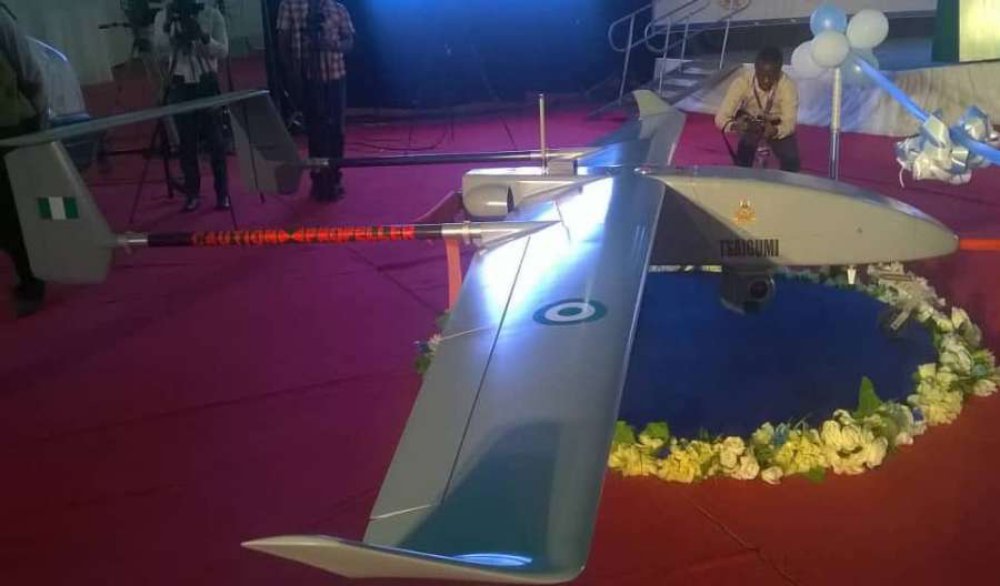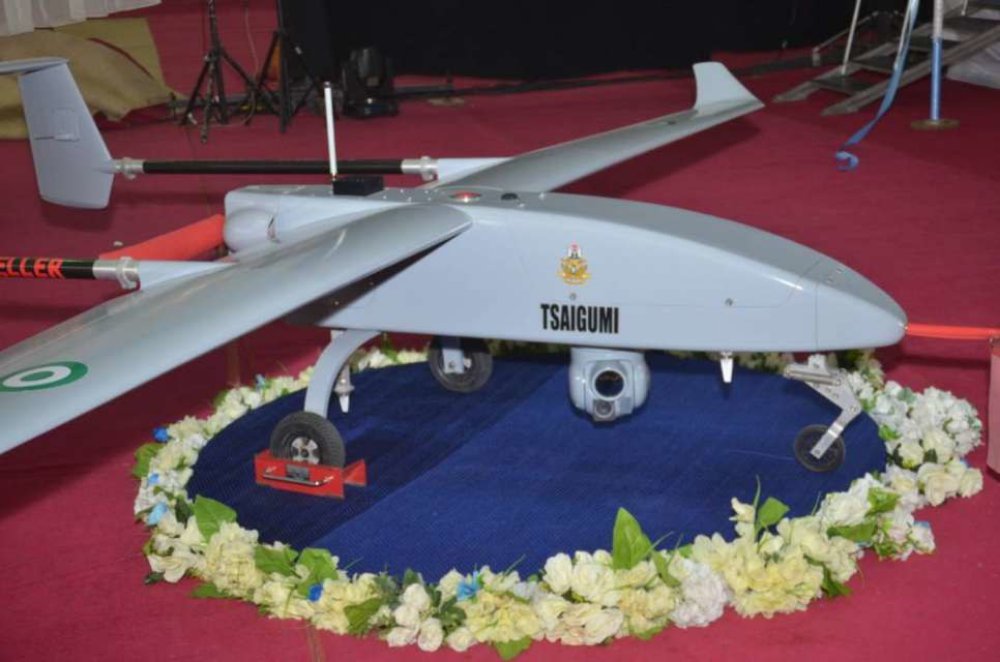The Nigerian Air Force (NAF) has reacted to claims in some quarters that President Muhammadu Buhari had inducted an Unmanned Aerial Vehicle (UAV) commissioned by his predecessor, Goodluck Jonathan.
President Buhari launched Tsaigumi UAV, a ten-hour capacity drone for day and night operations on Thursday, January 15, 2018 in Kaduna.
Earlier In 2013, the NAF had developed Gulma, an experimental drone which was then unveiled by Former President Jonathan as the first indigenous UAV.
Unaware of the difference between both UAVs, some Nigerians claimed that the Buhari administration was “re-commissioning Jonathan’s drone”.
“It has become necessary to clarify certain misconceptions, which followed the announcement, by the Nigerian Air Force (NAF), of the induction of its first indigenous operational Unmanned Aerial Vehicle (UAV) by President Muhammadu Buhari,” the NAF spokesman said in a statement made available to Pulse on Friday, February 16, 2018.
He goes on further: “To set the records straight, while Gulam UAV is indeed the NAF’s first indigenous UAV, the newly inducted Tsaigumi UAV is the first indigenous operational UAV. Both UAV types are the outcomes of Research and Development (R&D) efforts of a team of NAF Aerospace Engineers.
“NAF’s foray into UAV development commenced in 2008, when its student officers, who were undergoing postgraduate studies in aerospace engineering programmes at Cranfield University, UK, chose UAV development as their research project. The student officers produced the Amebo UAV as part of their project and it had neither autopilot nor Intelligence, Surveillance and Reconnaissance (ISR) capability.
“By 2013, the NAF developed an experimental UAV, codenamed GULMA, which was then unveiled as the first indigenous UAV. It is noteworthy that Gulma UAV was a technology demonstrator used to gather performance data on UAV systems.
“Consequently, in September 2015, the Chief of the Air Staff (CAS), Air Marshal Sadique Abubakar, directed the NAF’s R&D Team to build an operational UAV, codenamed Tsaigumi to be used in the Northeast and other theatres of operation in Nigeria.
“The data gathered from the Gulma prototype was subsequently applied in the design of the operational UAV, known as Tsaigumi, and inducted into service on 15 February 2018. Although the Tsaigumi UAV was manufactured at the Air Force Research and Development Centre at NAF Base Kaduna, the Team had to collaborate with an overseas facility to produce the moulds.
“Tsaigumi UAV, which is capable of day and night operations, has an operational endurance in excess of 10 hours, a service ceiling of 15,000 feet and a mission radius of 100km. It has a maximum take-off weight of 80kg and its payload comprises an electro-optical infrared camera system as well as weapon hard points. The Tsaigumi UAV, whose engine sound is muffled, has a state of the art encrypted communication system.
“It has a wingspan of 5.5metres and is able to gather real time weather information. On the contrary, the Gulma UAV has an operational endurance of 4 hours, a service ceiling of 5,000 feet and could not be operated beyond 20km. It has a maximum take-off weight of 40kg and its payload is an electro-optical camera system only. The Gulma UAV, whose engine sound is not muffled, relies on direct radio frequency communication system with attendant limitations.
“The Gulma has a wingspan of 4.4 metres and relies on Air Traffic Control for weather information. Besides, while the Gulma UAV has an imported autopilot, the operational Tsaigumi UAV has an in-house developed autopilot. Tsaigumi UAV is thus a much more advanced and operationalized version of the earlier produced Amebo and Gulma UAV prototypes,” he announced.
Adesanya said the NAF is currently working on ICHOKU, which when completed, would be the first indigenous Unmanned Combat Aerial Vehicle (UCAV) in Nigeria.
Source: Pulse Nigeria



